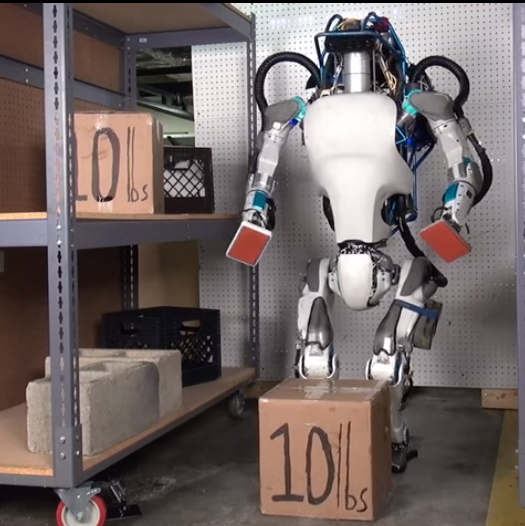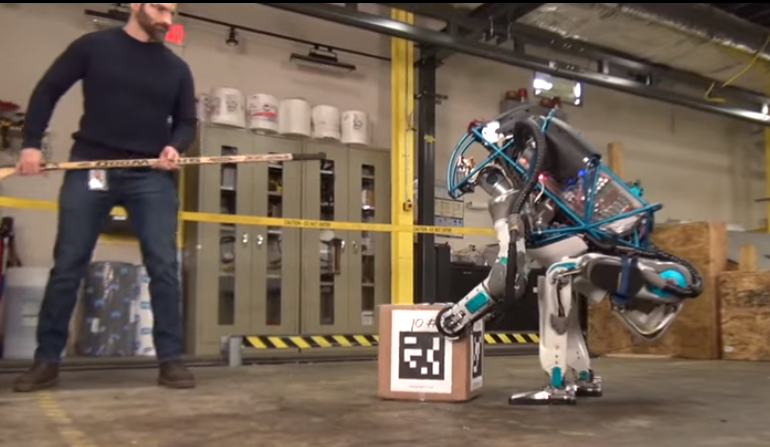Google-owned Boston Dynamics recently released a video of the newest iteration of its ATLAS biped robot being harassed by humans as it attempted various tasks including picking up boxes, opening doors, and keeping on its feet while trekking through the snow. No matter if the bullies knocked the box out of its hands or pushed it off its feet, the bot continued what it was set to complete.

Image source: Boston Dynamics.
Though it may seem unfair to ATLAS, the men who pushed the robot down and knocked over its boxes were all in aid of testing its compensatory systems. A bipedal robot must be able to stay on its feet and recover from falls if it’s to be of use, and ATLAS proved its ability to stay standing. The video from Boston Dynamics, below, shows ATLAS taking running steps backwards to keep its balance when it’s shoved by a hockey stick, and is shown getting back on its feet when it does fall over.
This new version of ATLAS is lighter, weighing in at 82-kg instead of the 150-kg of the previous iteration, and is packed with sensors, including stereo cameras and surveying technology Lidar. This uses a laser light in order to estimate distances and spot targets, potentially helping the bot with its box-carrying tasks. QR codes can also be seen on some of the boxes, which is another way for ATLAS to identify its targets.

Image source: Boston Dynamics.
One of the most important changes to the next-gen bot is the lack of cables and support tethers. This frees up ATLAS for many uses, including search-and-rescue operations in areas humans can’t enter, and any kind of outdoor work. Although a robot that must stay plugged in would still be of some use, such as a domestic cleaner or on a production line, for futuristic applications, it’s going to need to be able to venture out on its own.
ATLAS was originally developed by Boston Dynamics for the DARPA Robotics Challenge, which ran from 2012 to 2015. The challenge was to design at least semi-autonomous robots that could operate in dangerous, degraded, human-engineered environments.
Source: Forbes
Advertisement
Learn more about Electronic Products Magazine





